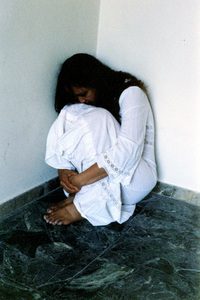 In response to the dramatic rise in the number of mass shootings around the country, earlier this year the Illinois Legislature began working on legislation aimed at trying to stop mass shootings from happening in Illinois. As a result, on July 16h, 2018, Illinois governor Bruce Rauner signed into law the Firearms Restraining Order Act which allows for petitions to be filed in court to have a no contact order issued against someone deemed to be a threat to themselves or to others. The new law is commonly called the “Red Flag” bill. It would allow family members, police and others to seek an Order Protection in Court to take away the guns from someone found to pose “an immediate and present danger” to themselves or to others.
In response to the dramatic rise in the number of mass shootings around the country, earlier this year the Illinois Legislature began working on legislation aimed at trying to stop mass shootings from happening in Illinois. As a result, on July 16h, 2018, Illinois governor Bruce Rauner signed into law the Firearms Restraining Order Act which allows for petitions to be filed in court to have a no contact order issued against someone deemed to be a threat to themselves or to others. The new law is commonly called the “Red Flag” bill. It would allow family members, police and others to seek an Order Protection in Court to take away the guns from someone found to pose “an immediate and present danger” to themselves or to others.
At the same time, Governor Rauner signed into law a bill that expands the 72-hour waiting period to the purchase of all guns. Prior to this measure being enacted, the 72-hour waiting period only applied to handguns. Now, the 72-hour waiting period applies to the purchase of all guns, including assault-style weapons.
The “Red Flag” bill is an attempt to take tools that are used in Domestic Battery and Domestic Violence cases and apply them to situations that might help prevent mass shootings from occurring. The new law allows for a representative of a school, a business, or a church, to petition the court for an order prohibiting that person from entering that building if they can show the court that that person has exhibited threatening behavior.
 Chicago Criminal Lawyer Blog
Chicago Criminal Lawyer Blog


 Many times when someone is arrested and charged with a Domestic Battery the Court will issue an Order of Protection that seeks to protect the person claiming to be abused (Petitioner) from being harmed or harassed by the person who is being charged with the Domestic Battery. When I have a client (Respondent) that has an Order of Protection entered against them they often get confused and do not fully understand what this means and what they can and cannot do. I want to discuss what an Order of Protection is and what you need to do to protect yourself from Violating the order and getting into deeper trouble.
Many times when someone is arrested and charged with a Domestic Battery the Court will issue an Order of Protection that seeks to protect the person claiming to be abused (Petitioner) from being harmed or harassed by the person who is being charged with the Domestic Battery. When I have a client (Respondent) that has an Order of Protection entered against them they often get confused and do not fully understand what this means and what they can and cannot do. I want to discuss what an Order of Protection is and what you need to do to protect yourself from Violating the order and getting into deeper trouble. The main difference between a Civil Order of Protection and a Criminal Order of Protection has to do with how the person who is seeking the Order of Protection goes about getting the Order of Protection entered, or issued. An Order of Protection is a court order which bars someone from having at least some contact with another person. The typical Order of Protection forbids a person from being anywhere near another person or forbids them from being at a certain location or attempting to make any contact whatsoever with the other person. It’s really the only way that the legal system can offer protection from bodily harm from another person. It’s a piece of paper that has no power in and of itself to prevent anything from happening. The only thing that the Order of Protection does is allow the police to arrest someone if they are found to be in Violation of the Order of Protection.
The main difference between a Civil Order of Protection and a Criminal Order of Protection has to do with how the person who is seeking the Order of Protection goes about getting the Order of Protection entered, or issued. An Order of Protection is a court order which bars someone from having at least some contact with another person. The typical Order of Protection forbids a person from being anywhere near another person or forbids them from being at a certain location or attempting to make any contact whatsoever with the other person. It’s really the only way that the legal system can offer protection from bodily harm from another person. It’s a piece of paper that has no power in and of itself to prevent anything from happening. The only thing that the Order of Protection does is allow the police to arrest someone if they are found to be in Violation of the Order of Protection.